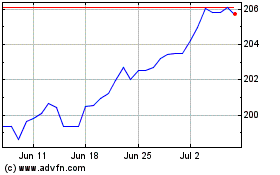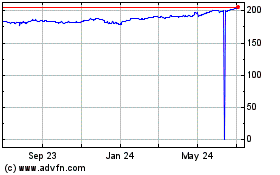Yen Slides Against Majors
May 01 2015 - 5:09AM
RTTF2
The Japanese yen weakened against the other major currencies in
the late Asian session on Friday, as traders reduced their exposure
ahead of the national holidays next week.
The Japanese market will be closed until May 6 for Golden Week
holidays. Meanwhile, the Japanese bond prices also fell.
In other economic news, data from Markit Economics showed that
the manufacturing sector in Japan slipped into contraction for the
first time in nine months, with a revised manufacturing PMI reading
of 49.9. That's up from last month's preliminary April reading of
47.7, although it's down from 50.3 in March.
Data from the Ministry of Internal Affairs and Communications
showed that the consumer prices in Japan gained 2.3 percent on year
in March. That exceeded forecasts for 2.2 percent, which would have
been unchanged from the February reading.
The unemployment rate in Japan came in at a seasonally adjusted
3.4 percent on year in March. That beat forecasts for 3.5 percent,
which would have been unchanged from the February reading.
Thursday, the Yen showed mixed trading against its major rivals.
But, the currency rose after the Bank of Japan left its monetary
policy unchanged despite lowering inflation and economic growth
outlook. As expected, the bank continued to increase the monetary
base at an annual pace of about JPY 80 trillion.
The bank expects inflation to ease to 0.8 percent in the fiscal
2015 instead of 1 percent projected in January.
Although the timing of inflation reaching around 2 percent
depends on developments in crude oil prices, it is projected to be
around the level in the first half of fiscal 2016, the BoJ said in
its semi-annual "Outlook for Economic Activity and Prices"
report.
In the Asian trading today, the yen fell to 128.69 against the
Swiss franc for the first time since February 12, from an early
high of 127.91. The yen may test support near the 137.00
region.
Pulling away from an early high of 119.36 against the U.S.
dollar, the yen edged down to 119.85. On the downside, 121.50 is
seen as the next support level for the yen.
The yen slipped to more than a 2-month low of 134.97 against the
euro, nearly a 2-month low of 184.46 against the pound and a 2-day
low of 99.17 against the Canadian dollar, from early highs of
134.33, 183.84 and 98.81, respectively. If the yen extends its
downtrend, it may find support around 135.00 against the euro,
185.85 against the pound and 99.50 against the loonie.
Against the Australian and the New Zealand dollars, the yen
dropped to 94.65 and 91.03 from early highs of 94.17 and 90.57,
respectively. The yen is likely to find support around 97.50
against the aussie and 93.50 against the kiwi.
Looking ahead, Canada and U.S. manufacturing PMI for April, U.S.
construction spending data for March and U.S. Reuters/University of
Michigan's final consumer sentiment index for April are due to be
released in the New York session.
At 8:30 am ET, U.S. Federal Reserve Bank of Cleveland President
Loretta Mester will deliver a speech on "Issues in Consumer Credit"
before the Conference on Regulating Consumer Credit in
Philadelphia.
Subsequently, San Francisco Fed President John Williams is
expected to speak on "Monetary Policy in Financial Markets: Is
there a New Paradigm?" before the Chapman University Conference in
Orange, United States at 3:45 pm ET.
Most markets in Asia and Europe are closed in observance of the
Labor Day holiday.
Sterling vs Yen (FX:GBPJPY)
Forex Chart
From Mar 2024 to Apr 2024

Sterling vs Yen (FX:GBPJPY)
Forex Chart
From Apr 2023 to Apr 2024
